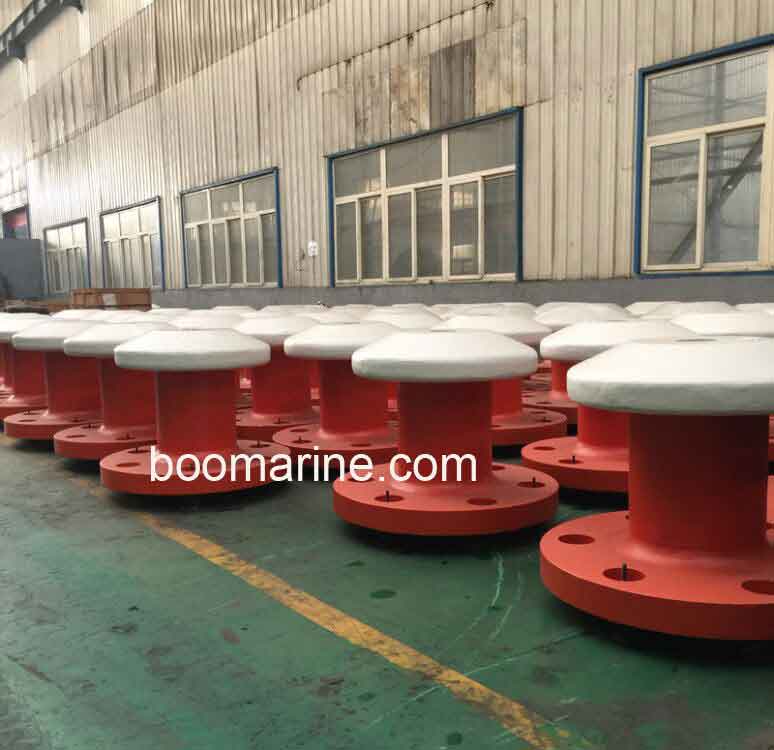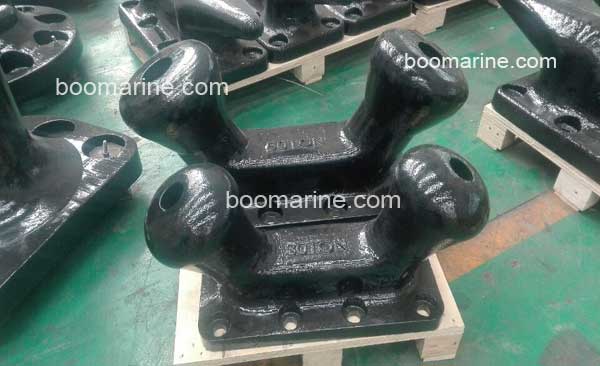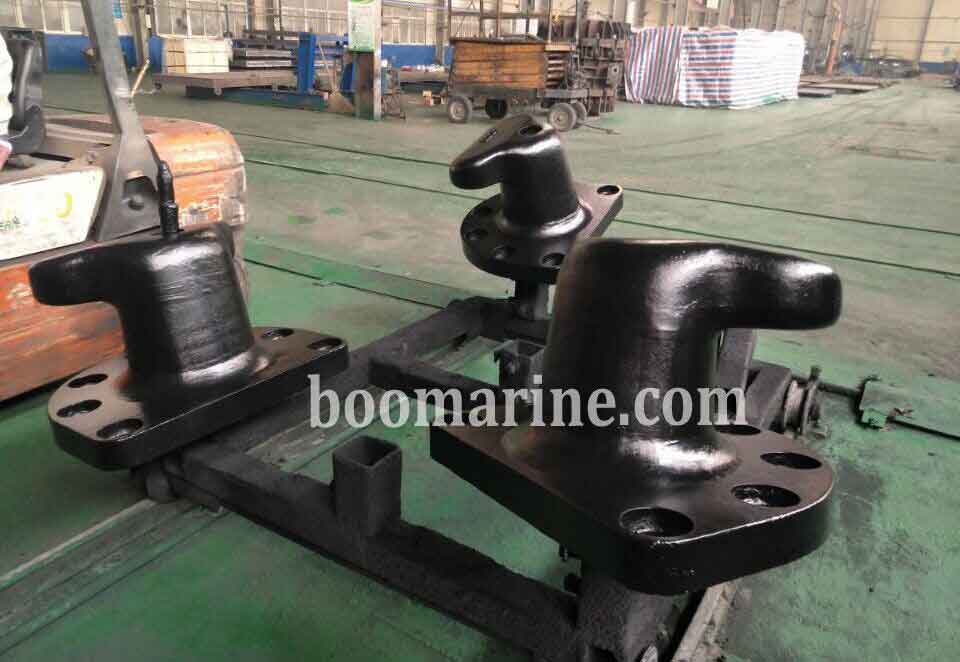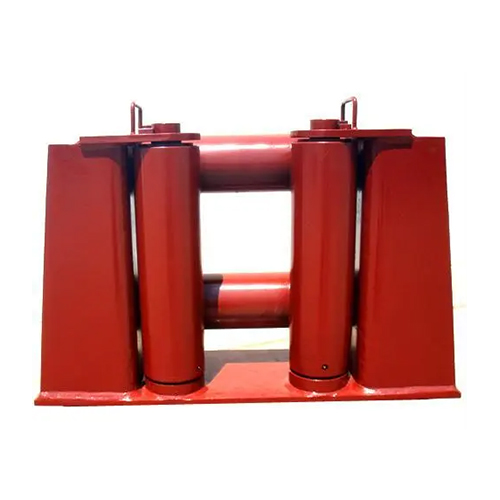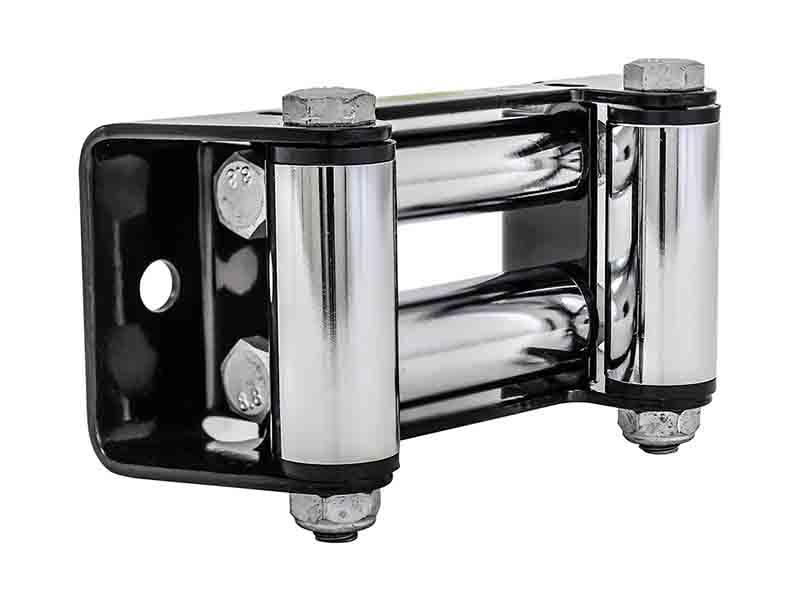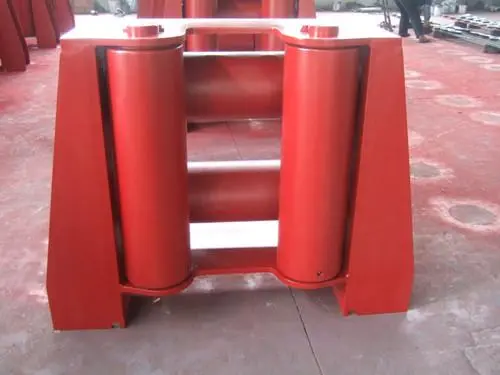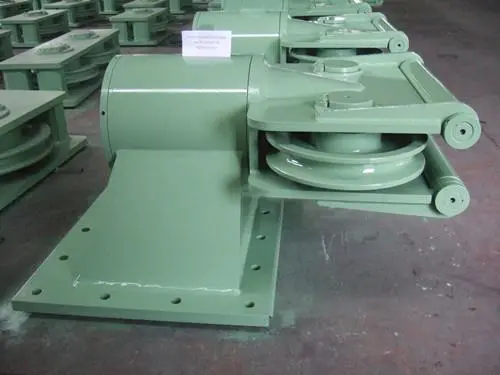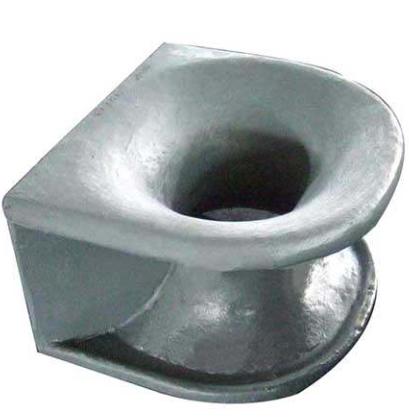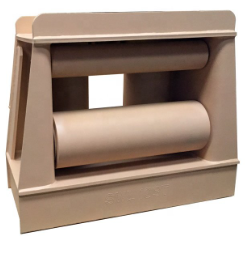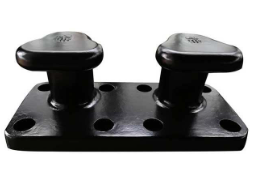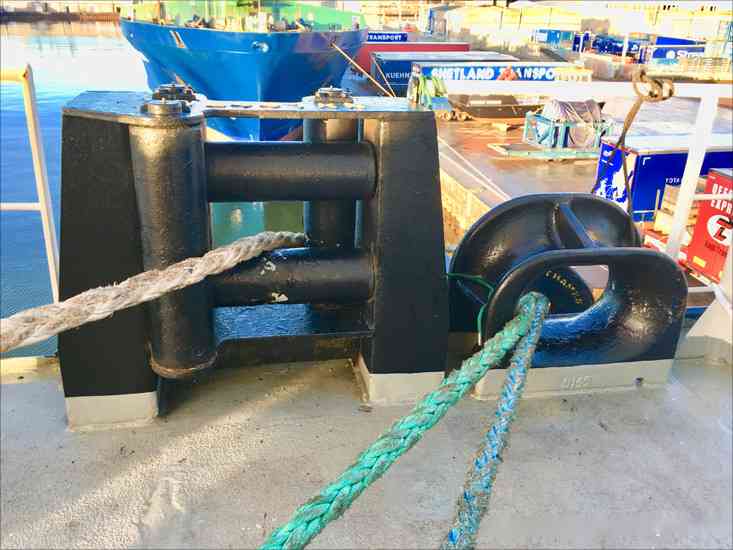Table of Contents
Mooring and berthing operations are critical processes in maritime settings, that involve safely securing a boat with a bollard or cleat to a fixed structure such as a dock, quay, or pier. These operations ensure boat stability, facilitate efficient loading and unloading of cargo, and prevent accidents and collisions.
In the intricate world of maritime operations, where boats navigate the vast expanse of waterways and berth at bustling ports, the importance of secure mooring and berthing operations cannot be overstated. At the heart of these operations lie two fundamental elements that ensure stability, safety, and efficiency: bollards and cleats. These unassuming fixtures, seemingly ordinary yet remarkably essential, serve as the anchors of maritime security. In this exploration, we delve into the distinct characteristics and roles of bollards and cleats, shedding light on their individual contributions to the seamless functioning of maritime activities.
Bollards: Shore-Based Mooring Fixtures
1. What are Bollards?
Bollards are robust, vertical posts strategically positioned along docks, quays, and piers in maritime settings. Serving as steadfast mooring fixtures, their primary purpose is to securely anchor vessels during mooring and berthing operations. Bollards act as stable attachment points, allowing ships to be tied to the shore, facilitating loading and unloading, and preventing unintended movement.

2. Types of Bollards
Characteristics and Designs:
Bollards come in various configurations, each tailored to specific mooring scenarios. The most common types include pillar bollards, double-bitt bollards, and T-head bollards.
Suitability for Different Vessels and Mooring Scenarios:
Pillar Bollards: These sturdy, vertically oriented bollards are adept at handling substantial loads and are often used in commercial port facilities.
Double Bitt Bollards: With their T-shaped tops, double bitt bollards offer versatile attachment points for mooring lines, making them suitable for various line configurations and angles.
T-Head Bollards: Positioned at the ends of docks, these bollards are designed to secure vessels perpendicular to the dock, optimizing space and maneuverability.
3. Functions and Advantages of Bollards
Handling Heavy Loads and Forces:
Bollards are engineered to bear the immense loads and forces exerted by vessels, especially larger ships. This capacity to withstand forces such as tides, currents, and wind is pivotal in preventing accidents and maintaining vessel stability.
Stationary Points of Attachment:
Bollards provide fixed points of attachment for mooring lines, enabling precise control over a ship’s positioning during mooring and berthing. This stability is crucial in preventing collisions and facilitating safe cargo operations.
4. Materials and Construction of Bollards
Durable Materials:
Bollards are crafted from materials known for their durability and resilience. Traditional options include cast iron and steel, while modern innovations have introduced alternatives like stainless steel and composite materials.
Importance of Strength and Stability:
The structural integrity of bollards is paramount to their effectiveness. They must withstand the mechanical stresses and corrosive elements present in the marine environment. The choice of materials and construction methods directly impacts their longevity and ability to endure harsh conditions.
As steadfast sentinels of maritime mooring, bollards stand as testament to the intricate balance between design, functionality, and safety. Their diverse forms and unwavering strength exemplify their role as cornerstones of secure mooring operations, ensuring vessels find stability in the midst of the unpredictable seas they navigate.
Cleats: Onboard Line Attachment Points
1. What are Cleats?
Cleats are fixtures mounted on boats and vessels, designed to secure lines, ropes, and cables. These fittings serve as essential attachment points, enabling vessels to be tethered to mooring fixtures, other vessels, or stationary structures. Cleats play a pivotal role in maintaining vessel stability, controlling lines, and facilitating safe operations.
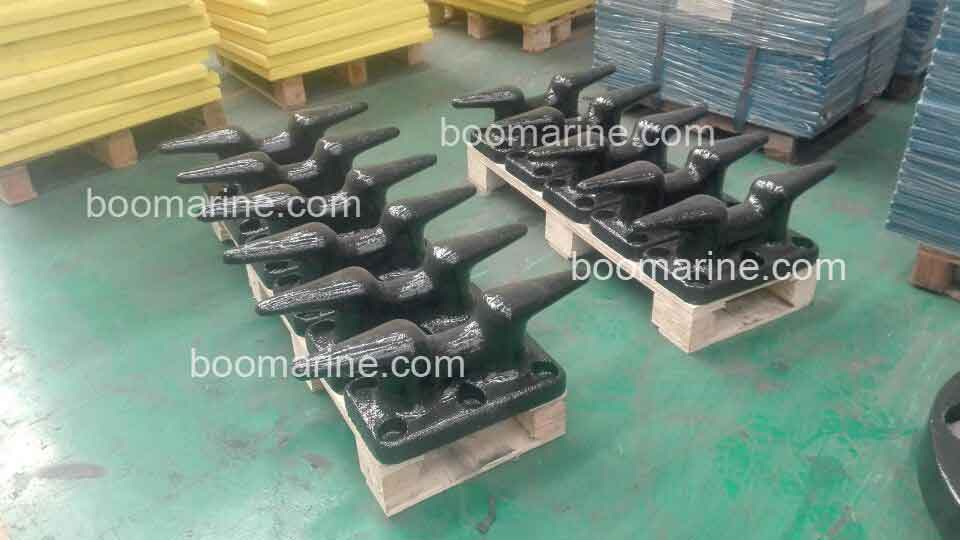
2. Types of Cleats
Variations in Design and Usage:
Cleats come in various styles, each tailored to specific applications. Common types include deck cleats, horn cleats, and jam cleats.
Applicability to Different Types of Boats and Vessels:
Deck Cleats: These flat cleats are typically found on the deck of boats, offering secure and versatile points for attaching lines.
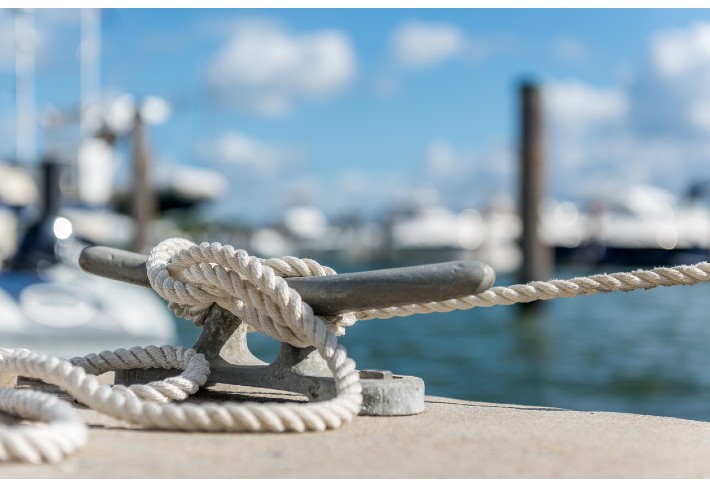
Horn Cleats: Featuring upward-curving “horns,” these cleats excel at preventing lines from inadvertently slipping off.
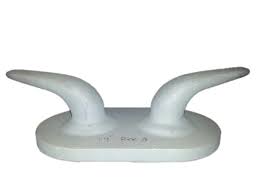
Jam Cleats: With a gripping mechanism, jam cleats are used for temporary line control, such as adjusting sail lines.
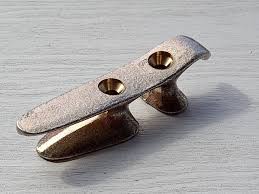
3. Functions and Advantages of Cleats
Versatility and Adjustability:
Cleats offer flexibility in line attachment, allowing lines to be secured at different angles and tensions. This versatility is especially useful in varying mooring scenarios.
Ease of Securing Lines on the Boat:
Cleats provide an accessible and straightforward method for securing lines quickly, enabling efficient mooring, docking, and other line-handling operations.
4. Materials and Construction of Cleats
Common Materials:
Cleats are constructed from materials chosen for their strength and durability. Stainless steel, aluminum, and nylon are frequently used due to their corrosion resistance and longevity.
Consideration of Weight and Corrosion Resistance:
Cleats must strike a balance between weight and strength, ensuring they can withstand the forces applied during mooring without adding unnecessary mass to the vessel. Corrosion resistance is essential, given the exposure to saltwater and other harsh marine elements.
As unassuming yet indispensable elements of maritime vessels, cleats epitomize the harmony between functionality and design. Their diverse forms and steadfast dependability underscore their role as linchpins of secure line management, enabling vessels to navigate the waters with confidence and ensuring that every line can be handled with precision.
Differences in Design and Usage
Bollards and cleats, though both serving as critical components in securing vessels, differ significantly in their design and usage. These distinctions stem from their distinct roles and the specific needs they address within maritime operations.
1. Design and Attachment Points:
- Bollards: Bollards are large, vertical posts typically anchored to the shore or fixed structures. Their design emphasizes robustness and load-bearing capacity. Bollards provide a vertical surface against which mooring lines can be wrapped, creating friction and secure attachment points. Their size and shape vary based on the type and size of vessels they are meant to accommodate.
- Cleats: Cleats are smaller, often horizontal, fittings attached to the deck or sides of a vessel. Their design features horns, arms, or gripping mechanisms that prevent lines from slipping off easily. Cleats come in various shapes, with their design tailored to the specific purpose and location on the vessel. Their attachment points are part of the vessel itself, providing adaptable options for line placement.
2. Load-Bearing Capacity:
- Bollards: Due to their stationary nature and sturdy construction, bollards are engineered to handle significant loads and forces generated by larger vessels. They must endure dynamic forces from tides, currents, and the vessel’s movement during docking.
- Cleats: While cleats are durable, their load-bearing capacity is generally lower compared to bollards. They are best suited for smaller vessels, recreational boats, and operations where the loads and forces are less intense.
3. Portability and Versatility:
- Bollards: Bollards are fixed and stationary. They provide secure attachment points along the shoreline and are essential for commercial ports and terminals where vessels need to remain stable during cargo operations.
- Cleats: Cleats offer portability and adaptability. They can be positioned according to the needs of the vessel and the specific mooring scenario. Cleats are versatile, making them suitable for smaller boats, recreational craft, and situations where vessels require different attachment angles.
4. Safety and Ease of Handling:
- Bollards: Bollards require careful line handling and control during mooring. The potential for line snapback poses safety concerns for crew members working in the vicinity of the bollards.
- Cleats: Cleats provide easier and safer line management. Crew members can more easily secure and release lines from cleats, reducing the risk of line mishaps and accidents.
The differences in design and usage between bollards and cleats stem from their distinct functions and the types of vessels and operations they cater to. These differences underscore their complementary roles in mooring and berthing operations, ensuring safety, stability, and efficiency across a spectrum of maritime activities.
Applications and Scenarios
The distinctive characteristics of bollards and cleats lead to their specialized applications in various maritime contexts, catering to the specific needs of different types of vessels and operations. Their strategic deployment ensures the safe and efficient mooring and berthing of vessels across a range of scenarios.
1. Bollards in Commercial and Industrial Settings
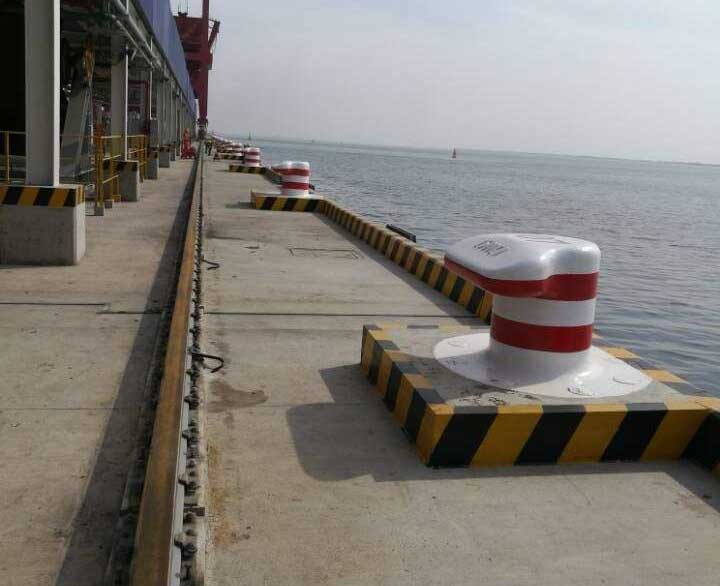
Seaports, Terminals, and Large Vessels: Bollards reign as the stalwart guardians of bustling seaports and cargo terminals. As mammoth vessels, laden with freight, glide into these expansive docks, bollards stand ready to absorb the tremendous forces generated during mooring. Their substantial load-bearing capacity makes them indispensable for securing colossal container ships, oil tankers, and bulk carriers, facilitating the seamless transfer of goods between land and sea. The sheer size and weight of these vessels necessitate the stability and strength that bollards provide, ensuring safe and controlled mooring.
2. Cleats in Recreational Boating
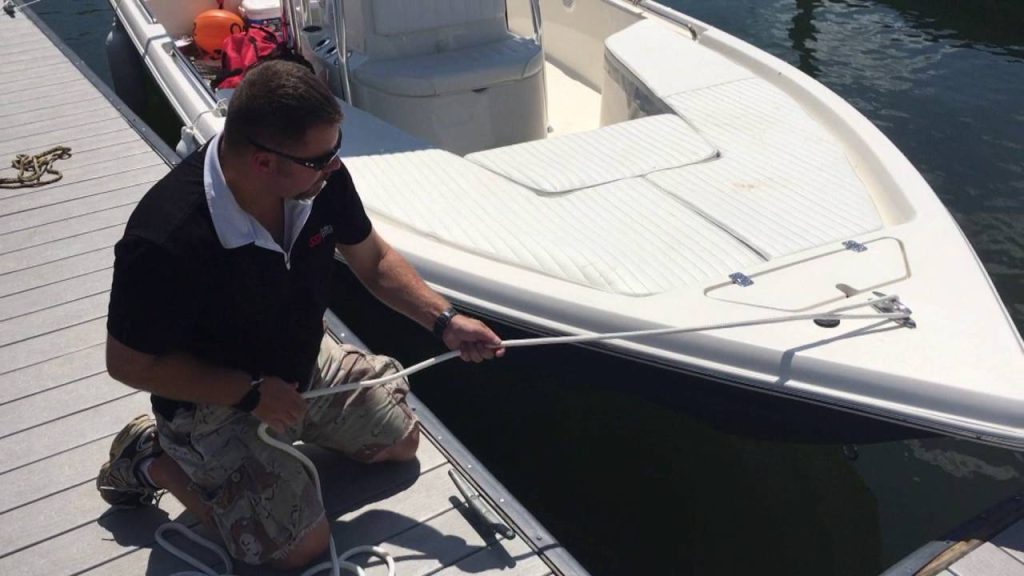
Yachts, Sailboats, and Smaller Watercraft: In the realm of leisure and recreation, cleats take center stage. Whether it’s the graceful arcs of yachts or the nimble maneuvers of sailboats, cleats find their place as trusted companions for securing vessels during tranquil stops along the shoreline or at serene marinas. Cleats offer simplicity and versatility, catering to the diverse needs of smaller watercraft. They allow for swift and straightforward line attachment, enabling boaters to effortlessly tie up, disembark, and embark on new aquatic adventures.
3. Synergy between Bollards and Cleats in Mooring Operations
Combining Shore-Based and Onboard Attachment Points: The harmonious convergence of bollards and cleats underscores their interdependent roles in mooring operations. While bollards stand as immovable sentinels along the shore, cleats complement their steadfastness with adaptability. Larger vessels arriving at commercial ports leverage the robust grip of bollards to navigate the intricate dance of mooring, relying on their unyielding support during cargo operations. Simultaneously, the crew of smaller vessels finds solace in the versatile embrace of cleats, securing their crafts with ease during leisurely sojourns. Together, bollards and cleats form a cohesive system that caters to a spectrum of maritime endeavors, ensuring secure, stable, and efficient mooring regardless of vessel size or purpose.
As maritime environments unfold in their diversity, bollards and cleats emerge as the cornerstones of maritime safety and functionality. Their distinct applications, informed by their unique attributes, epitomize the symbiotic relationship between tradition and innovation, stability and adaptability, and the ceaseless endeavor to navigate the seas with grace and precision.
Factors Influencing Choice
The selection between bollards and cleats for mooring and berthing operations is a nuanced decision influenced by a myriad of factors. These considerations encompass vessel-specific characteristics, operational conditions, and practical preferences, ensuring that the chosen mooring components align seamlessly with the unique requirements of each maritime endeavor.
1. Vessel Size and Type
- Vessel Size: The size of the vessel plays a pivotal role in determining the mooring components. Larger vessels, characterized by their substantial mass and higher forces, benefit from the secure and robust attachment provided by bollards. Cleats, on the other hand, cater to smaller vessels due to their adaptability and ease of use.
- Vessel Type: Different vessel types necessitate specific mooring requirements. Commercial cargo vessels and industrial ships are better suited to the strength of bollards, whereas recreational boats and yachts find greater convenience with cleats.
2. Mooring Location and Conditions
- Mooring Environment: The environmental conditions of the mooring location, including tidal fluctuations, wave intensity, and wind forces, impact the choice between bollards and cleats. Locations prone to heavy currents or turbulent waters may require the resilience of bollards to endure the stresses generated by these conditions.
- Berthing Space: The layout of the mooring area influences the choice of mooring components. In narrow berths or congested spaces, cleats provide a more adaptable solution for securing vessels at varying angles.
3. Load Requirements and Forces
Load-Bearing Capacity: The magnitude of the loads and forces exerted during mooring operations is a crucial consideration. Bollards, designed to handle substantial loads, are essential when dealing with larger vessels or heavy cargo. Cleats are suitable for operations with lower loads, such as smaller vessels or recreational boating.
4. Practical Considerations and Preferences
- Operational Efficiency: The efficiency of mooring operations is influenced by the practicality of using either bollards or cleats. The ease of attaching and releasing lines, as well as the speed at which vessels can be secured, impacts the overall efficiency of the operation.
- Crew Expertise: The skill level of the crew members involved in mooring operations can influence the choice between bollards and cleats. Cleats may be preferred when crew members are more familiar with their usage, ensuring smoother and safer operations.
In the intricate dance of maritime mooring and berthing, the interplay of these factors guides the selection of bollards or cleats. The decision hinges on a delicate balance, where safety, efficiency, and the unique demands of each maritime scenario converge, ensuring that vessels are securely anchored and poised to navigate the vast waters or rest in tranquil harbors.
Conclusion: Navigating Stability and Safety in Maritime Mooring
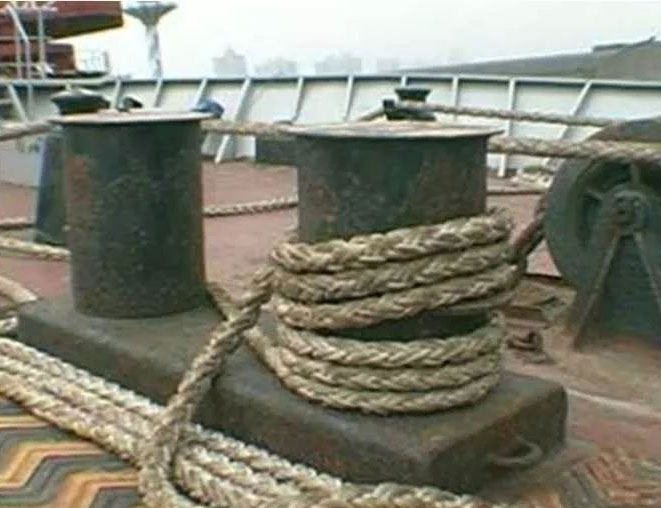
In the maritime realm, where vessels of varying sizes and purposes traverse the ever-changing waters, the significance of secure mooring and berthing operations cannot be overstated. The dynamic interplay of bollards and cleats has emerged as a cornerstone of maritime safety, stability, and efficiency. As this exploration of their roles unfolds, a profound understanding of their differences, applications, and influences has come to the fore.
The harmonious interplay of these two elements creates a synergy that transcends their individual capabilities. Larger vessels deftly leverage the strength of bollards during complex mooring maneuvers, finding steadfast support in their robust design. Simultaneously, smaller craft finds comfort in the adaptability of cleats, enabling swift and secure line attachment, whether in serene marinas or sheltered coves.
The factors that influence the choice between bollards and cleats—vessel size, mooring conditions, load requirements, and practical considerations. With each choice, the goal remains consistent: to ensure the safety of crew members, the security of vessels, and the efficiency of mooring and berthing operations.

